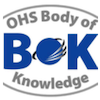Chapter 34.4: Work Design
Abstract
Work design – “the content and organisation of one’s work tasks, activities, relationships,
and responsibilities” (Parker, 2014) – is a key way to ensure health and safety in the
workplace. This chapter describes the theoretical understanding of work design based on
more than a century of research and clarifies the relevance of work design principles for
OHS professionals. Central to the way that work design is addressed is the distinction
between characteristics that act as resources for the worker or work team (e.g. autonomy,
meaningfulness, task and skill variety, and social support) and characteristics that act as
demands (e.g. time pressure, role conflict and emotional demands). Work design
characteristics are associated with a broad range of outcomes, including outcomes related
to safety, health and wellbeing. The chapter includes practical guidance for supporting
organisational efforts to improve work design.
Keywords: work design, occupational health and safety, OHS, wellbeing, psychological health,
motivation, job crafting, performance
First year of publication: 2022
Current Version: 2022
Chapter 34.4: Work Design
Table of content
| 1 | Introduction |
| 2 | Historical perspective |
| 3 | Work design – current theory and models |
| 3.1 | Job characteristics model |
| 3.2 | Expanded work design model |
| 3.3 | Job demands–control model |
| 3.4 | Job demands–resources model |
| 3.5 | SMART model |
| 3.6 | Teamwork |
| 3.7 | Key points |
| 4 | Outcomes of work design |
| 4.1 | Individual, team and organisational outcomes |
| 4.2 | Safety outcomes |
| 4.3 | Balancing work design characteristics |
| 5 | Influences on work design |
| 5.1 | External factors |
| 5.2 | Organisational factors |
| 5.3 | Work group factors |
| 5.4 | Individual factors |
| 5.5 | Top-down work design by managers |
| 5.6 | Triggers for work (re)design |
| 6 | Measuring work design |
| 7 | Top-down work redesign interventions |
| 8 | Job crafting (bottom-up work redesign) |
| 9 | Role of OHS professionals |
| 10 | Summary |
References

Lisette Kanse MSc, PhD, FHEA
Senior Lecturer, Psychology at Work Laboratory, School of Psychological Science,
University of Western Australia
Email: lisette.kanse@uwa.edu.au
Lisette coordinates and teaches several UWA coursework units focused on work design,
organisational development and change, and human and organisational factors in managing work
health and safety. With a background in safety science, Lisette has worked in research, training
and consultancy in a variety of industrial settings in Europe and Australia, including the chemical
industry, oil and gas, mining, rail transport and healthcare. Lisette’s current research focuses on
human performance at work via field study collaborations with industry partners and not-for-profit
organisations, and experimental studies on virtual teams and error management. Her research
has informed the design of work and organisational processes and interventions. Lisette is the
course coordinator of UWA’s Graduate Certificate in Business Psychology and Master of
Business Psychology.

Laura Fruhen Dipl.-Psych, PhD
Lecturer, Psychology at Work Laboratory, School of Psychological Science,
University of Western Australia
Email: laura.fruhen@uwa.edu.au
Laura coordinates the research project units of the UWA Master of Industrial and Organisational
Psychology course and a coursework unit on Teamwork. Laura is an expert on leadership, team
dynamics, work design, organisational culture and attitudes at work. She links these concepts with
workplace safety, mental health and wellbeing, and behaviour. Laura’s research in the energy
sector, aviation, healthcare, construction, firefighting and road safety has informed practices in
these industries. She is a lead author of publications resulting from WA Government-funded
research into FIFO worker mental health and wellbeing
Learning Outcomes: Systems
The OHS Body of Knowledge takes a conceptual approach which enables it to be applied in different contexts and frameworks.
To optimise its value for education and professional development learning outcomes have been developed for each technical chapter in the Body of Knowledge.
The learning outcomes as described give an indication of what should be the capabilities of an OHS professional; it is up to those developing OHS education programs, OHS professionals planning their CPD or recruiters or employers selecting or developing people for the OHS function to consider the required breadth vs. depth .
Please read the section on using the learning outcomes before delving into the leaning outcomes of the individual chapters.
The numbers against each learning outcome refer to the chapter number of the BOK download page. No learning outcomes have been developed for the chapters considered introductory or underpinning knowledge (that is chapters 1, 2, 3, 4, 5, 6, 7, 1, .13, 14, 15.)

